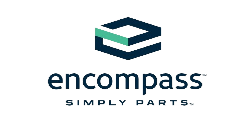Like any business, manufacturers are focused on finding ways to improve profitability throughout their organizations. Faced with heavy global competition and ever-changing technology trends leading to shortened product lifecycles and plummeting prices, consumer electronics OEMs are particularly challenged even as the country emerges from the Great Recession.

Robert Coolidge
President & CEO
One area that OEMs are starting to scrutinize is their service parts cost. In an attempt to increase revenue, some are deciding to manage parts on their own and are even bypassing their parts distribution networks to sell direct to the market in a bid to capture additional margin. But with high operational costs and other demanding factors associated with parts distribution, squeezing out that little bit of extra margin is not likely to be worth it in the long run.
Other manufacturers have opted to outsource parts supply chain management to distributors like Encompass. While we obviously have a vested interest in encouraging the outsourcing route, it actually does make the most economical sense for OEMs. Beyond that, it helps improve aftermarket support for their products – increasing customer satisfaction – and frees them to focus on product development in a highly-competitive space.
Encompass currently manages service parts for several OEMs in the consumer electronics, appliance and HVAC industries. Distributors can offer complete inventory ownership service, which eliminates the need of OEMs to manage forecasting and obsolescence – including last time buys and excessive minimum order quantities. In every case, Encompass has significantly increased parts availability and decreased back orders, turnaround times and product exchanges for our manufacturer clients through highly-effective forecasting and procurement, while reducing parts pricing in the market.
Distributors also can integrate with claims management systems to provide an extra layer of auditing and to control parts costs for in-warranty repairs. This ensures parts ordered match the product model being repaired and do not exceed the product value. Additionally, the process prevents non-warranty accessories like remote controls from being added to a claim.
By taking ownership of parts, distributors assume responsibility for accounts receivable, which removes the hassle of collections for OEMs. They also take on the risk for excess and obsolete parts and pay for warehouse infrastructure costs. Unlike manufacturers that manage parts for just their own brand, distributors are able to spread operational costs across multiple brands.
Most importantly, distributors are able to provide a higher level of customer support to service techs and consumers. At Encompass, parts management is our core competency – it’s what we’ve been doing for the past 60 years. At a recent appliance trade show, I heard from several different servicers that they won’t touch certain brands because of the difficulty in getting parts. If consumers can’t get support for their products after the sale, how loyal will they be to that brand in the future?
Manufacturers may look to parts for revenue generation, but at the end of the day, they are likely to find it’s not the cash cow they envision and their brand loyalty could be at stake.
To hear more about Encompass’ parts supply chain management services or obtain a comprehensive free analysis of the overall cost savings benefit, please contact me directly:
rcoolidge@encompass.com or 800.432.8542.













